When one looks at a dialysis machine, they might think it’s just another piece of medical equipment with flashing monitors, humming pumps, and clear tubing carrying blood. However, beneath that sterile rhythm is a delicate balancing act that calls for the patient’s extraordinary fortitude and the medical staff’s unwavering accuracy. “How do dialysis patients die?” began as a clinical curiosity and has developed over the past 20 years into a moving discussion between science, caregiving, and the fundamentally human desire to prolong meaningful life.
A substantial amount of data in recent years has demonstrated that infections, rather than kidney failure, are remarkably frequent causes of death for dialysis patients. Even experienced nephrologists have been taken aback by this discovery. According to a 16-year longitudinal study archived by PubMed, infections that enter the bloodstream through peritoneal access points, arteriovenous fistulas, or catheter ports account for more than one-third of deaths. These are not strange or sporadic occurrences. They are foreseeable, avoidable breakdowns in a crucial treatment regimen.
Patients exchange one struggle for another by relying on dialysis machines to purify their blood three times a week. Their bodies’ incapacity to fight off bacteria is killing them instead of the accumulation of toxic waste in their blood. Many become physically weak, suffer from anemia, and lose their appetite. In older people, particularly those over 65, the immune response is already weakened. The infection spreads swiftly with just one minor hygiene error and one missed antibiotic dosage. Sepsis, a fatal immune system overreaction that starts to shut down organs one by one, develops if treatment is delayed.
Patient Risk Profile and Medical Summary Table
| Key Aspect | Details |
|---|---|
| Medical Condition | End-Stage Renal Disease (ESRD) |
| Life-Sustaining Treatment | Hemodialysis or Peritoneal Dialysis |
| Average Life Expectancy | 5 to 10 years, longer for some with good adherence |
| Common Cause of Death | Infections (36%+), followed by withdrawal from dialysis and heart issues |
| Risk Factors | Age, diabetes, heart disease, immune suppression |
| Withdrawal Mortality | Especially common in elderly, linked with poor quality of life |
| Sudden Death Risk Window | First 12 hours post-dialysis session |
| Infection Sources | Catheter sites, bloodstream, peritoneum |
| Prevention Focus | Consistent care, infection control, diet, cardiovascular monitoring |
| Reference Link | https://pubmed.ncbi.nlm.nih.gov/1882824/ |

Options for remote dialysis were experimentally introduced during the pandemic. These choices have shown promise in reducing the risk of infection, despite not being widely used yet. A few hospitals in North America reported a markedly lower rate of catheter-related infections by utilizing home-based systems. Nonetheless, most patients continue to receive care in clinics, particularly in underfunded hospital systems or low-resource areas.
Hemodialysis’s cardiovascular side effects are just as dangerous, albeit frequently more abrupt. The machine puts a great deal of strain on the heart as it removes extra fluid from the blood and rebalances electrolytes like potassium, calcium, and sodium. The quick changes are too much for some hearts to handle. In actuality, sudden cardiac death—especially in patients with a history of heart failure—occurs remarkably frequently during or within 12 hours of treatment. Usually, these incidents don’t provide a warning. After leaving the clinic with a smile, a patient might pass out at home later that night.
It’s frequently hard for non-medical people to comprehend why someone would decide to stop dialysis. However, continuing dialysis becomes more difficult than helpful for many long-term patients, especially those who have several comorbidities like diabetes, vascular disease, or cognitive decline. Withdrawal is rarely an impulsive decision. It follows recurrent hospital stays, persistent pain, and occasionally even a silent, unsaid loss. Family members characterize it as regaining agency—choosing the quality of days over the number of sessions—rather than as giving up.
When dialysis is stopped, the patient’s body starts to retain waste and fluid once more. The last days aren’t always unpleasant or chaotic, though. When properly managed with palliative care, this phase can be incredibly peaceful, according to hospice professionals, particularly those who have cared for dialysis patients in their final weeks. Medication is used to manage symptoms such as disorientation, fatigue, and dyspnea, and the patient spends the remaining time with family. Caregivers frequently characterize this transition as dignified and surprisingly gentle.
Numerous well-known people have contributed to increasing public awareness of chronic illness. After living with lupus and kidney damage, Selena Gomez had a kidney transplant. By sharing her story publicly, she reminded people that kidney disease does not only affect the elderly but also young, active people. However, few celebrities openly discuss the realities of dialysis at the end of life, leaving many families to face the last stages in fear and uncertainty.
Over the past ten years, there has been a noticeable shift in the focus regarding system-wide care. In order to provide more comprehensive treatment plans, nephrologists are now collaborating closely with dietitians, cardiologists, and mental health specialists. The objective is to lower hospital readmissions, which are still high among dialysis patients, by coordinating efforts. Simultaneously, a number of startups have started creating wearable technology that continuously monitors hydration and potassium levels, providing an incredibly efficient means of identifying early indicators of cardiac stress.
Additionally, dialysis centers have advanced the personalization of care by incorporating AI and data analytics. It is now possible to flag patients who have a history of vascular complications for more frequent scans or medication reviews. This isn’t merely innovation for the sake of innovation. Shorter recovery times and fewer emergency incidents are already results of it.
Education is crucial for families. Results can be significantly impacted by knowing how dialysis operates, what symptoms to look out for, and when to get help. Thankfully, a lot of hospitals now offer coaching to both patients and caregivers, making sure that nobody feels alone during such a trying time.
